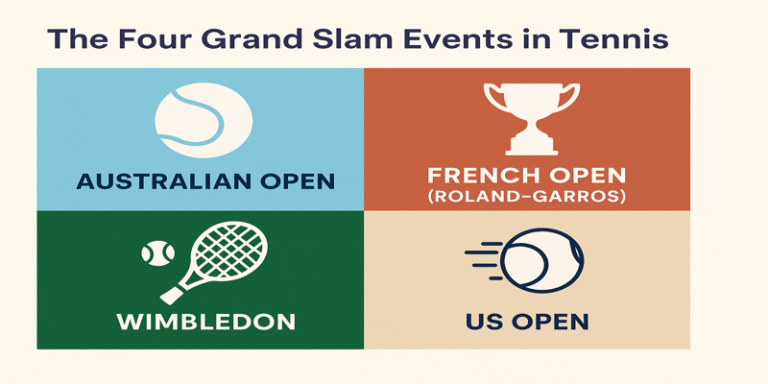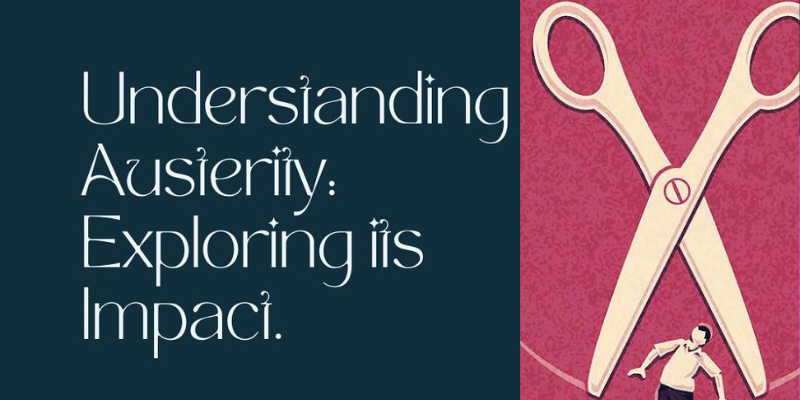Tennis is one of the most globally recognised sports, marked by its elegant yet fiercely competitive nature. At the pinnacle of this sport lie the four Grand Slam tournaments: the Australian Open, French Open (Roland Garros), Wimbledon, and the US Open. These tournaments represent the highest level of achievement in the sport, each possessing distinct historical significance, surface conditions, and cultural prestige. Collectively, they form the “Grand Slam” — a feat of winning all four in a calendar year, a rare and celebrated accomplishment.
Historical Origins and Evolution
Each Grand Slam tournament has a rich heritage:
- The Australian Open, inaugurated in 1905, was initially known as the Australasian Championships. Due to its geographical remoteness, it initially attracted fewer international competitors (Crespo et al., 2003).
- The French Open, which began in 1891, became international in 1925. Held at Roland Garros, it is famed for its red clay surface, demanding immense physical stamina and technical precision (Nevill & Holder, 1999).
- Wimbledon, the oldest, commenced in 1877 and is deeply entrenched in tradition — from its grass courts to the requirement of white attire (Gupta et al., 2025).
- The US Open, beginning in 1881, is known for its energetic crowds and innovations such as night matches and electronic line-calling (Gorgi et al., 2019).
The tournaments evolved over time, adapting to technology, athlete welfare, and global broadcasting standards. For example, the Australian Open switched from grass to hard courts in 1988, while Wimbledon only recently adopted final-set tie-breaks in 2019 to reduce marathon matches (Smith et al., 2018).
Surface Types and Playing Conditions
One of the defining aspects of each Grand Slam event is its surface:
- Australian Open: Played on Plexicushion hard courts, this surface offers a balanced bounce and pace, favouring baseline players.
- French Open: Clay courts significantly slow down the ball and produce high bounce, rewarding patience, topspin, and endurance.
- Wimbledon: The only grass-court Slam, it produces a fast game with low bounces, suiting serve-and-volley players.
- US Open: Played on DecoTurf hard courts, it features a quicker surface than Melbourne’s courts, favouring aggressive styles (Mecheri et al., 2016).
These variances require players to adapt styles and tactics, often separating the good from the great. Achieving success across all four surfaces demands exceptional versatility — exemplified by legends like Roger Federer, Rafael Nadal, and Serena Williams.
Statistical and Tactical Significance
Statistical analyses reinforce the strategic adaptations required across the four Slams. Gupta et al. (2025) highlighted that winning the first set in Wimbledon significantly correlates with overall victory, indicating momentum’s crucial role in shorter rallies on grass. Meanwhile, Rioult et al. (2016) demonstrated that serve speed and direction have greater impact on hard and grass courts, while clay demands longer baseline exchanges and mental stamina.
Interestingly, data from Gorgi et al. (2019) suggest that upsets are less frequent in Grand Slam events due to the best-of-five format in men’s matches and heightened stakes, which favour consistent top-ranked players.
Cultural and Economic Importance
The Grand Slam events hold cultural resonance far beyond tennis. Wimbledon, for instance, is a symbol of British heritage, drawing royalty and traditions like strawberries and cream (Nevill & Holder, 1999). In contrast, the US Open epitomises modernity, diversity, and innovation, regularly drawing record crowds and global sponsorships.
Economically, these tournaments generate significant revenue. Wimbledon alone generated over £300 million in 2023, with TV rights, sponsorships, and tourism (Chmait et al., 2020). The Australian Open, while initially lagging behind, has risen to prominence due to improved scheduling, accessibility, and global marketing (Sotiriadou et al., 2015).
Gender, Pressure and Social Impact
A growing body of literature analyses the psychological and sociological aspects of these tournaments. For instance, Cohen-Zada et al. (2017) explored gender differences under pressure, revealing that male and female athletes may respond differently to high-stakes conditions, especially in Grand Slams.
Meanwhile, Maquirriain (2014) evaluated historical performance patterns, revealing that most champions tend to peak 1–2 years before winning their first Grand Slam, highlighting the importance of long-term development over short bursts of form.
Moreover, heat stress studies from the Australian Open indicate growing concern for player welfare amid climate change, with significant implications for match scheduling and surface material (Smith et al., 2018).
The Rarity of a True Grand Slam
Winning all four tournaments in a single calendar year — the “Calendar Grand Slam” — remains one of the rarest feats in tennis. Only a handful of players, including Rod Laver (1962, 1969) and Steffi Graf (1988), have accomplished this. Graf’s achievement is particularly notable as she also won the Olympic gold medal that year, completing the “Golden Slam” (Reid et al., 2018).
Comparative Prestige and Legacy
While each tournament holds equal ranking points, players and fans often view them through different lenses. Wimbledon is arguably the most prestigious due to its longevity and tradition. The French Open is considered the most physically demanding. The Australian Open is often referred to as the “Happy Slam” for its player-friendly environment, while the US Open is the most commercially dynamic (Eggeling, 2024).
Data from Della Croce et al. (2022) also suggest that draw fairness and match diversification are most effective in the US and Australian Opens due to advanced scheduling algorithms and wildcard distribution strategies.
The four Grand Slam events are more than just sporting contests; they are cultural landmarks, economic engines, and crucibles of athletic excellence. Each represents a unique blend of tradition, innovation, and challenge. Together, they define greatness in tennis, shaping careers, national pride, and fan memories for generations.
References
Chmait, N., Robertson, S., Westerbeek, H., & Eime, R. (2020). Tennis superstars: The relationship between star status and demand for tickets. Journal of Sport Management, Elsevier. Link
Cohen-Zada, D., Krumer, A., & Rosenboim, M. (2017). Choking under pressure and gender: Evidence from professional tennis. Journal of Economic Behavior & Organization.
Crespo, M., Reid, M., Miley, D., & Atienza, F. (2003). The relationship between professional tournament structure on the national level and success in men’s professional tennis. Journal of Science and Medicine in Sport.
Della Croce, F., Dragotto, G., & Scatamacchia, R. (2022). On fairness and diversification in WTA and ATP tennis tournaments generation. Annals of Operations Research.
Eggeling, K. A. (2024). Politics and power in the global tennis circuit. International Affairs, Oxford University Press.
Gorgi, P., Koopman, S. J., & Lit, R. (2019). The analysis and forecasting of tennis matches by using a high dimensional dynamic model. Journal of the Royal Statistical Society.
Gupta, K., Krishnamurthy, V., & Deb, S. (2025). What elements of the opening set influence the outcome of a tennis match? An in-depth analysis of Wimbledon data. IIMB Management Review.
Maquirriain, J. (2014). Analysis of tennis champions’ career: how did top-ranked players perform the previous years? SpringerPlus.
Mecheri, S., Rioult, F., Mantel, B. et al. (2016). The serve impact in tennis: First large‐scale study of big Hawk‐Eye data. Statistical Analysis and Data Mining.
Nevill, A.M. & Holder, R.L. (1999). Home advantage in sport: An overview of studies on the advantage of playing at home. Sports Medicine.
Reid, M., Smith, M., Kovalchik, S. (2018). Heat stress incidence and matchplay performance at the Australian Open. Journal of Science and Medicine in Sport.
Sotiriadou, P., De Bosscher, V., & Brouwers, J. (2015). Sport-specific policies and factors that influence international success: The case of tennis. Sport Management Review.













